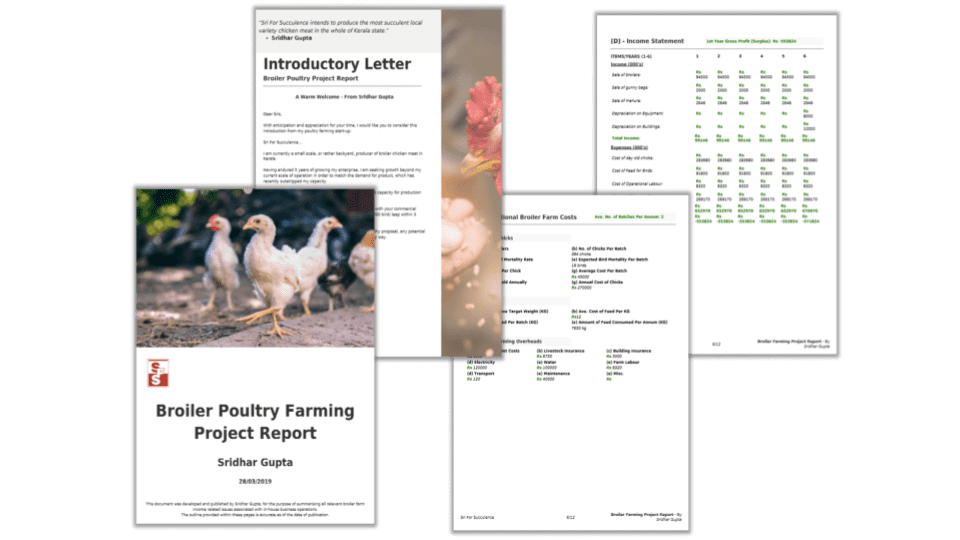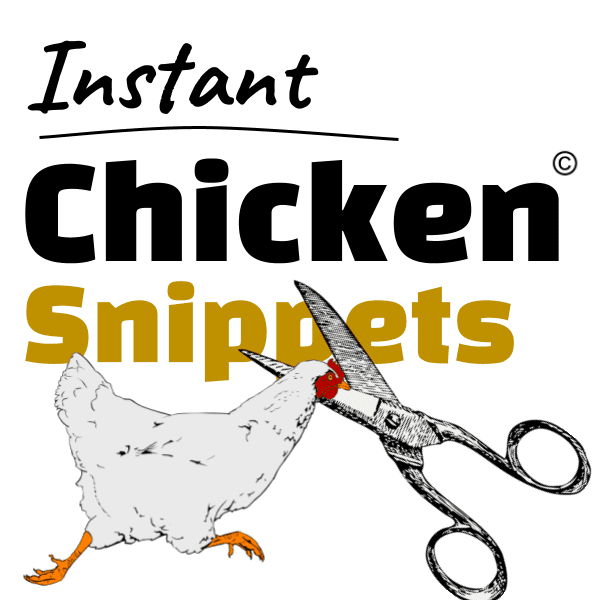There is a motto which anyone who’s been in the broiler business sticks by strongly:
All-In-All-Out (AIAO).
It is better to have moderate income with firmer foundations…
…than to lose it all trying to win big.
Broiler farming is a fixed schedule of investment from chick to target weight.
Typically, this could be 6-8 weeks, depending on breed, e.g. Cobb 500.
With a fixed number of weeks in the year, running sequential batches of broiler back to back…
…(With a week or two in between to sanitize the house)…
…leads to only so many potential cycles of earnings per year (6-8 cycles or batches).
Sure,
You could always increase batch size to grow, but with batches running in sequence –
In other words, one after another, you physically cannot turn over more cycles in a certain window of time.
But are there options for growth outside of increasing batch size?

Write Your Poultry Business Plan -
in Just 90 Mins!
Poultry Project Reporter 2.0 - fastest way to write your project report online.
Get Poultry Project Reporter 2.0Can a broiler farmer multiply earnings by tweaking the model somehow?
The short answer is, yes.
Broiler rearing models can accommodate simultaneous batches being reared on the same farm.
The advantages?
Take a look:
The image below shows the 4+1 model which involves having 4 occupied houses and 1 spare house available.
With this system, once in full flow – 3 batches in,
…you can expect to sell meat at market 3 times per month – instead of once every 2 months…approximately 6x the productivity of All In All Out.
Another model of broiler rearing is 8+2.
This model involves erecting 8 houses and having 2 spare.
This is how that system would practically work:
With the 8+2 system, you would stand to appear at market 6 consecutive weeks in a row.
Does all this additional productivity sound good to you?
And so it should.
However, there is a SERIOUS drawback.
Don’t just take my word for it…
Here is a blog comment from Ahmed Atef (seasoned broiler farmer and full-time poultry advisor to the Egyptian Agricultural Authorities):
Source: Broiler Rearing System: Making The Choice…8+2 or 4+1?
The high risk of cross-infection from multi-batch broiler rearing models is very REAL.
So much so, that broiler farmers worldwide almost unanimously back All-In-All-Out.
What is All-In-All-Out?
It is what it sounds like.
One batch at a time reared on the farm
NEVER rearing more than one batch at a time on-site.
This way you never expose your flocks to pathogenic threats that they are not used to.
This is a more biosecure means of protecting your farming profits.
An outbreak is always a very real risk at a broiler farm.
Birds will naturally carry viral and bacterial threats.
But their collective immunity typically is able to handle what they have already been exposed to.
It’s foreign exposure that puts stress on their bodies to respond.
Even with the best on-site hygiene and sanitary practices…
…it is almost impossible to entirely block cross-contamination between flocks.
It is highly likely there will be bacterial or viral transfer.
At such a young & impressionable age, the added challenge can seriously knock your flock out of sync.
This can lead to mortality or force you to cull for the preservation of the majority.
A loss is almost certain.
Plus, a lengthy post-clean down operation to avoid new arrivals getting hit too.
The bottom line…
All-In-All-Out is the solution.
It has a moderating effect for both broiler biosecurity, but also scale/income.
A prudent measure for any farmer who wants to maintain their long term investment prospects.
And now, over to you:
Have you suffered broiler farm disease outbreaks before?
Is All-In-All-Out your solution to the biosecurity problem?
is your broiler business doing well with multiple flocks regardless?
Or, are you new to this and are unsure about some of the principles?
Whatever it is, write me back and let me know.
I read every comment.
Speak soon,
Temi

Leave a Reply